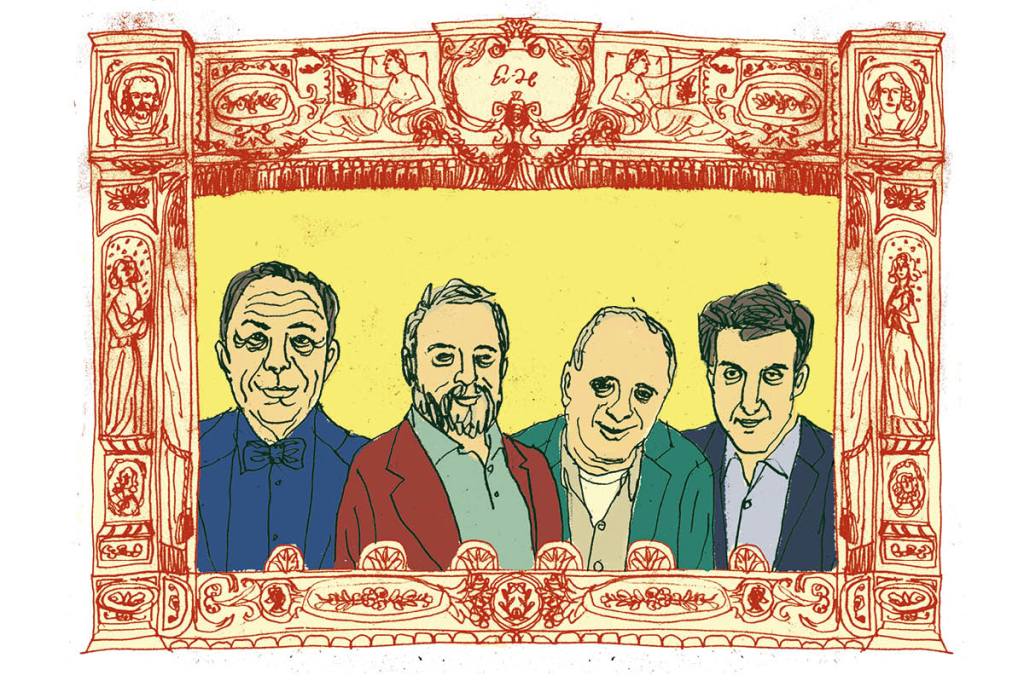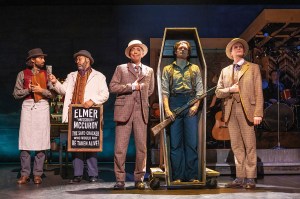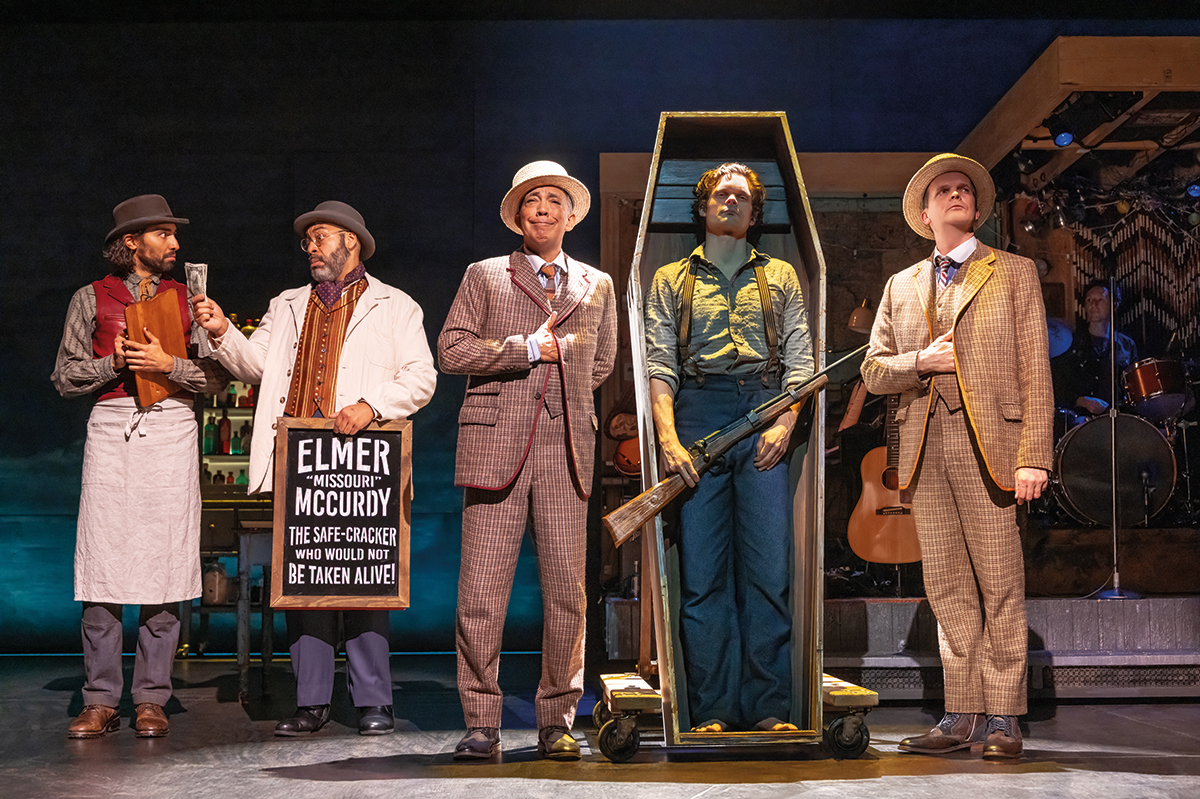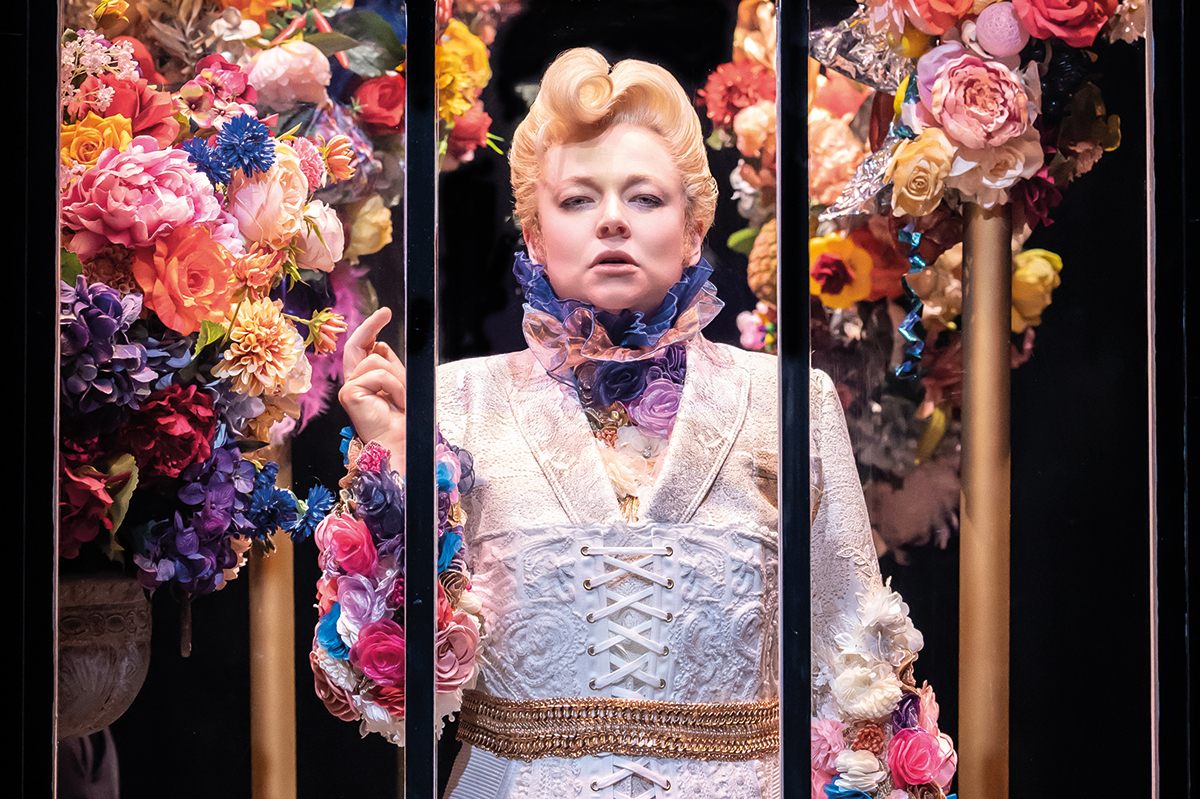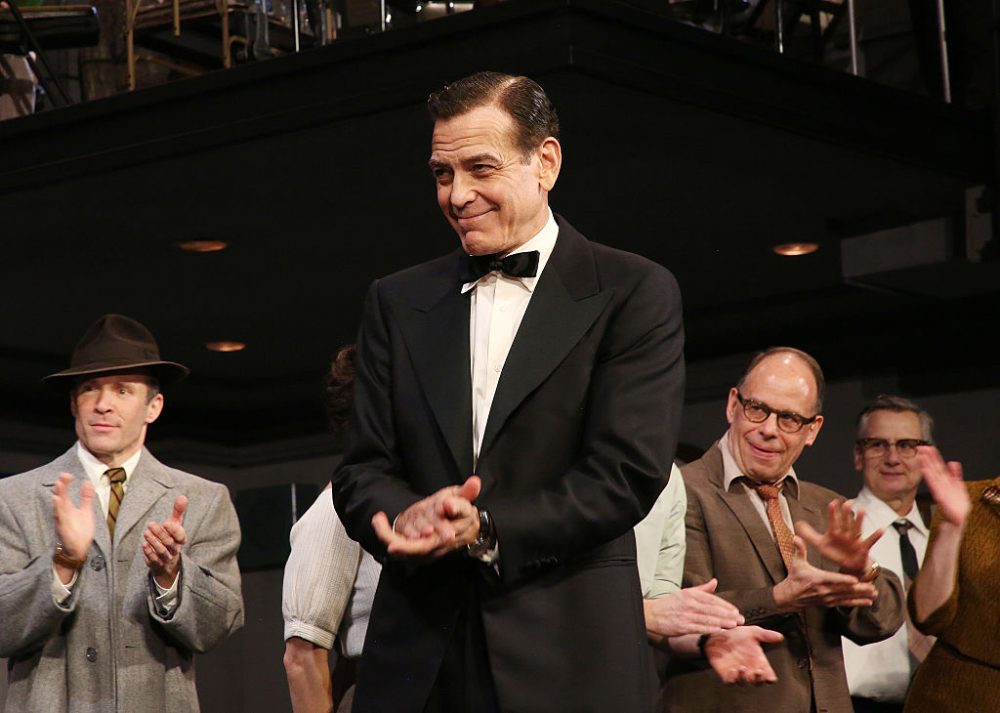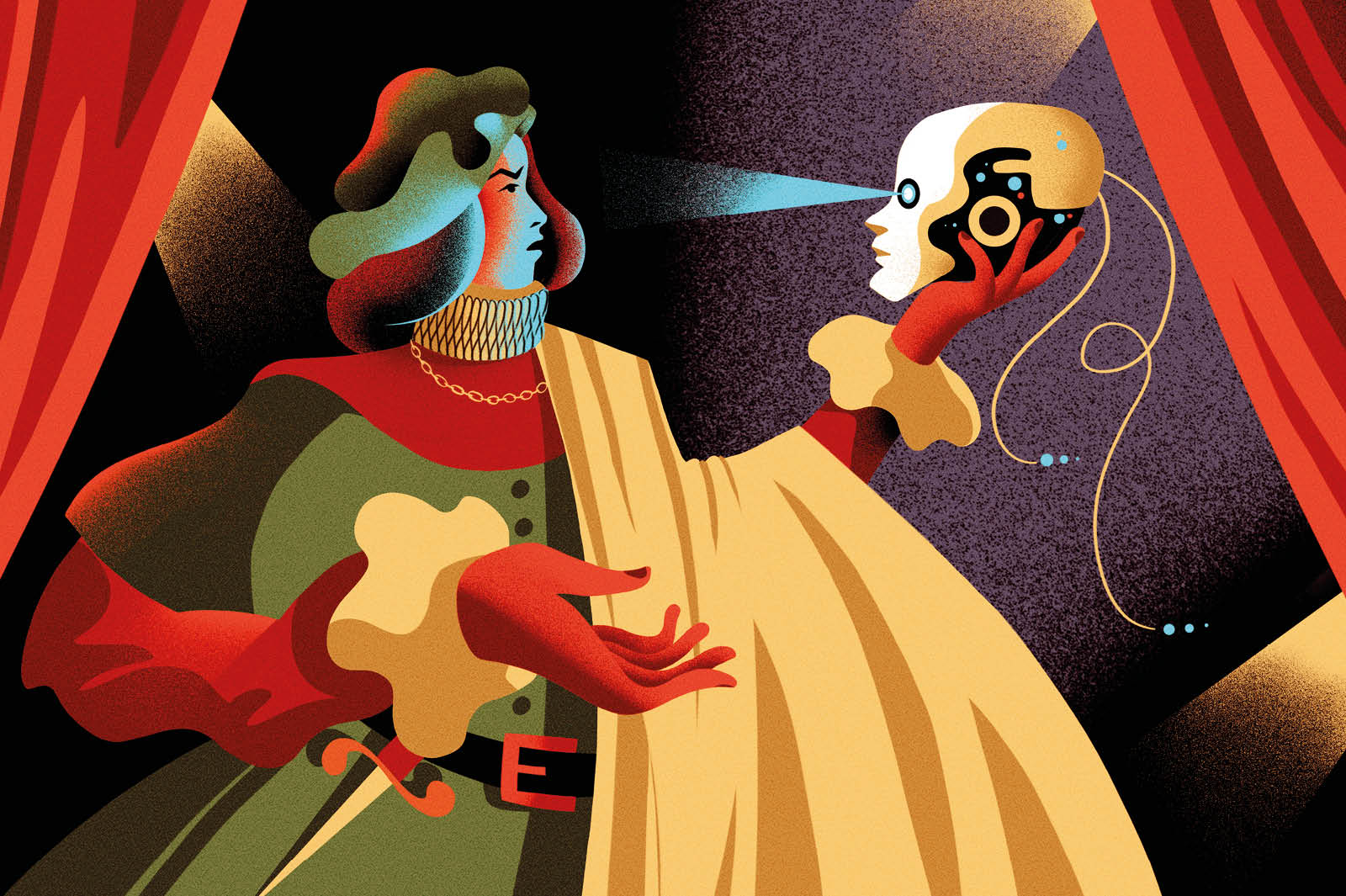On Sunday April 16, the curtain went down on Andrew Lloyd Webber’s Phantom of the Opera for the last of 13,981 performances on Broadway, a titanic thirty-five-year run grossing north of $1.3 billion.
The end of an era? Not quite — dating back to the 1979 opening of Evita, Lloyd Webber musicals have run continuously on the Great White Way for forty-four years. That streak is now hitched to the fortunes of Bad Cinderella, which opened just weeks before Phantom closed. The show gets a lift from a lush score and some winning numbers, as well as sumptuous set design. The whole premise, however, turns out to be a pumpkin, and it may spell midnight for the composer’s magical run within the year.
The Lloyd Webber brand connotes eye-popping embellishment and campy melodrama, but his best works put these aesthetics in service of a broader artistic vision. The setting of Bad Cinderella initially suggests this is on the cards, combined with a dose of self-awareness. Our “bad” heroine (Linedy Genao) is an outcast among the gleefully conformist citizens of Belleville, who chant that “beauty is our duty” and titter about the “sheer perfection” required by the domineering Queen, played by Grace McLean. Cinderella’s rebel persona presents a threat to this established order, which, in its choreographed excess, rather resembles the sort of garish fantasy-world that Lloyd Webber’s detractors accuse him of peddling.
In a clever twist, the Queen angles to neutralize Cinderella by wedding her to the mild-mannered heir apparent, her childhood friend Prince Sebastian. His older brother Prince Charming is missing in action, and as the Queen says, there’s “nothing like the marriage of a prince to a commoner” to “stop people getting all revolution-y.” Standing athwart this plan is the wicked Stepmother, who wants Sebastian for one her daughters, Adele or Marie. In terms of overall structure, then, we have two opposing styles needing musical and narrative resolution — Belleville’s high-Broadway camp and Cinderella’s punkish, let-it-all-hang-out individualism — with Sebastian caught in the middle.
Lloyd Webber has always been a canny practitioner of pastiche, and in the first half of the show he manipulates these styles to great success. “Man’s Man,” a paean to the missing Prince Charming, is an outrageous send-up of Broadway’s homoerotic predilections, and “I Know You,” in which the Stepmother cordially blackmails the Queen, ranks among the smartest numbers of the year. Just before intermission, Cinderella hands over her dead mother’s necklace to an enchanting Godmother to make her the most beautiful gal in Belleville. It’s a perfect cliff-hanger: by mortgaging her “bad” individualism, Cinderella imperils the integrity of the whole production.
The second act steamrolls this fine dilemma on its way to a hasty and unsatisfying conclusion. At the ball where Sebastian must choose a bride, he fails to recognize the transformed Cinderella and winds up with Adele. The show documents Cinderella’s hopeless efforts to delay the wedding and then, sellout be damned, simply hands her Sebastian on a silver platter.
At the nuptials, Charming reappears ex machina to reclaim the throne for himself by marrying the Duc de Violette. The Queen is thrilled (“The only thing that could possibly be better than one handsome King is two!”) and ceases to care about Sebastian, who is now free to elope with Cinderella. The pair certainly don’t fit in Belleville, which remains gorgeous and superficial as ever. The Godmother returns Cinderella’s necklace. Just be yourself, the show might have whispered — as long as you’re a nobody!
If Phantom (1981) dragged opera down to the basement, then Stephen Sondheim’s Sweeney Todd: The Demon Barber of Fleet Street (1979) brought middlebrow theater as close as it gets to high art. Since Sondheim’s death in November 2021, we’ve been treated to revivals of Company, Into the Woods, Merrily We Roll Along and now the present production of Sweeney, directed by Thomas Kail and reproducing Jonathan Tunick’s original twenty-six player orchestration, under the guidance of Alex Lacamoire, for the first time. As a monument of musical theater, Sweeney is unsurpassed. You won’t see better on Broadway this season.
Baron Lloyd-Webber went French for Phantom’s murderous inspiration, in Gaston Leroux’s 1910 novel of the same name. Sondheim, American, looked to England for Sweeney, working with Hugh Wheeler to adapt Christopher Bond’s 1973 stage version of the classic melodrama. In musical terms, Lloyd Webber’s classical quotations generally serve to connote grand-opéra excess; Sondheim, by contrast, aims at a near-operatic Gesamtkunstwerk, with the score coordinating and challenging the action on stage.
Take “No Place Like London,” which kicks off the action after the hair-raising prelude: when young Anthony (Jordan Fisher) sings, it’s an ode to the great city; for Sweeney, played by Josh Groban, a chance to curse it; and when the Beggar Woman interrupts them, vaudeville comedy. We first hear Sweeney’s imprisoned daughter Johanna in “Green Finch and Linnet Bird,” a gentle aria that underscores her purity and, as a result, hilariously sets up her frantic pleadings in “Kiss Me.” And then there’s “Pretty Women,” one of the most whimsical numbers Sondheim ever wrote — performed by Sweeney and his mortal enemy Judge Turpin, the latter in the barber’s chair.
Groban, a colossus of adult contemporary music, gives us a haggard, haunting Sweeney. One might have wished for more edge, more manic energy, at the climactic moments in “Epiphany” and the tragic closing sequence. But Groban excels in the comedic passages — see his razor-sharp deflation of “Pirelli’s Magical Elixir” and his gentle indifference to Mrs. Lovett’s pleas in “By the Sea.” For his counterpart, you couldn’t do better than Annaleigh Ashford: spry, dry and scampish, her Mrs. Lovett commands the stage from the first bars of “The Worst Pies in London” to the harrowing conclusion. Gaten Matarazzo is a properly pitiable rascal as Tobias.
Sondheim’s great achievement is to have drawn out real tragedy from all this whimsy. The result is a musical miracle, which I won’t spoil for the uninitiated. Attend the tale of Sweeney Todd.
When director/producer Harold Prince approached Sondheim about writing a score for Parade (1998), the composer declined. It’s not hard to see why. The 1913 trial and 1915 lynching of Leo Frank, a Brooklynite Jew in Atlanta framed for the murder of thirteen-year-old factory worker Mary Phagan, is about as poor a subject for musical tragedy as the Holocaust. There are no vexing dilemmas or compromised heroes to explore in song, no hard-won morals to point up — just the fact that the targeting and destruction of Jewish life is abhorrent, meriting the strongest condemnation.
That this truth would already seem to be acknowledged by Broadway theatergoers, in 1998 as today, makes the decision to stage such a politically charged musical rather suspect. Alas, in the hands of composer Jason Robert Brown and playwright Alfred Uhry, the story of what happened to Frank — so terrible it needs no embellishment — becomes an exercise in emotional torture porn, calculated to let New Yorkers project their racial insecurities onto the deplorable South.
The first half of the show depicts the arraignment and trial. On one side are Leo, his wife Lucille and their lawyer; on the other, Governor Slaton, prosecutor Hugh Dorsey, Mary’s mother, her teenage friends, a host of “witnesses,” local and state reporters — in short, the whole of Georgia. Each time a character is introduced, a real-life portrait photo is projected upstage, to lend the whole project historical authority. The practice verges on the absurd when the governor’s servants are introduced with the caption “Black People.”
Brown sweetens the action with a brassy, drum-heavy score, in the spirit of the 1913 Confederate Memorial Day parade that gives the show its title. Since the Confederacy is most identified with oppression of black Americans, the musical gambit sits uncomfortably against the fact that, in the Frank case, the likely perpetrator was a black man, Jim Conley. And since most audiences would prefer a root canal to sitting through Leo’s courthouse railroading, the music is often the only object of theatrical interest. Try to enjoy it, though, and your sympathies naturally incline toward the despicable Southerners with whom it has been identified. Given the plot, this is a theatrical dead end. Jazzy numbers like “The Factory Girls,” in which Mary’s friends testify to Frank’s general awfulness, veer into farce.
The action of the second half, in which the governor commutes Leo’s sentence to life in prison after a rapid-fire investigation, provides a flicker of hope — for Leo, not the audience, since we know he’ll be ripped from his cell and lynched at the end. After watching him suffer for two and a half hours, we’re no closer to understanding the men who treated Leo so brutally, let alone the fantasies, grievances and sheer small-mindedness of their world.
This article is taken from The Spectator’s June 2023 World edition.



